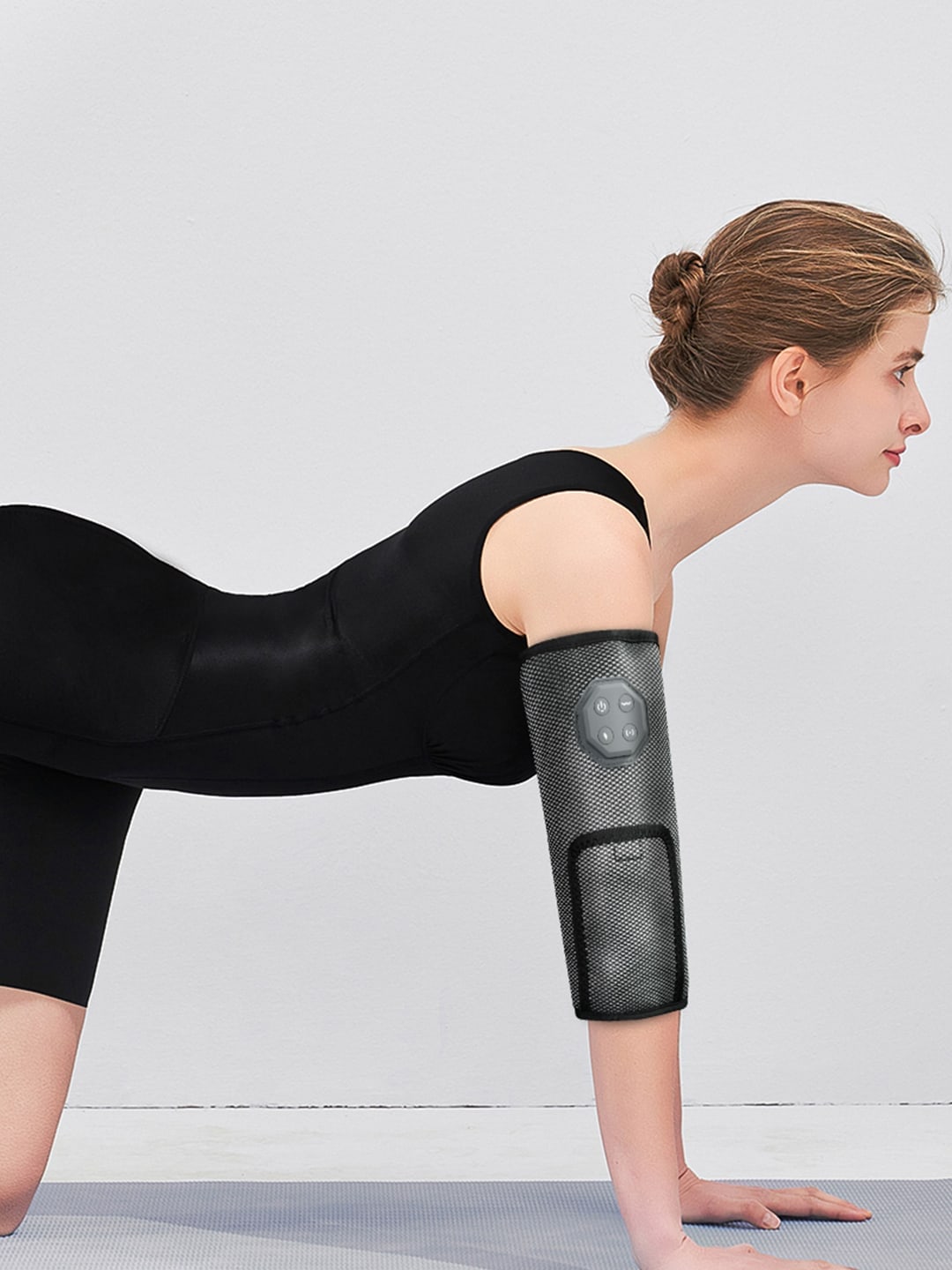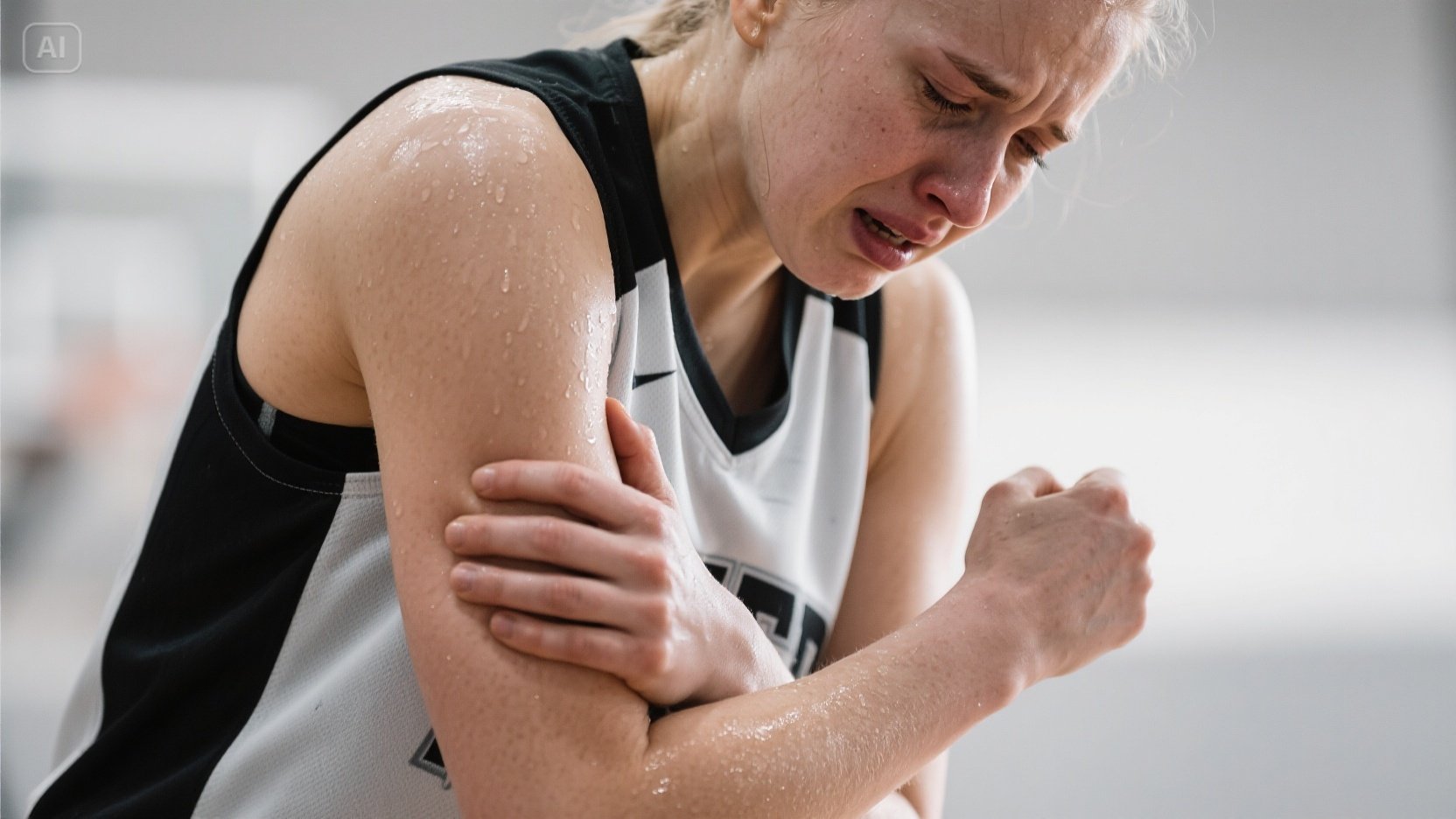Forearm Massager: Armaid or KLCOSY for Tendinitis Relief?
- By Grace
- Updated on
You’ve just crushed a new personal record on your deadlifts, or maybe you spent the weekend gripping tiny holds on a climbing wall. You feel invincible… until the next morning. That familiar, nagging burn on the outside or inside of your forearm is back. It's that frustrating pain that makes holding a coffee cup, let alone a barbell, a challenge. This is the calling card of forearm tendinitis, an all-too-common foe for fitness enthusiasts. So, what’s a dedicated athlete to do? You've likely heard whispers in the gym and seen ads online for a forearm massager, but the options are dizzying.
The debate often boils down to two very different champions and a scrappy underdog. In one corner, you have the Armaid: a rugged, manual tool praised for its deep-tissue intensity. In the other, the KLCOSY: a high-tech sleeve promising a spa-like experience with heat, compression, and vibration. And then there’s the skeptic’s choice: a simple lacrosse ball and some elbow grease. Are they just fancy gadgets, or can a good arm massager truly be the key to unlocking pain-free performance? Let's break it down.
Understanding That Nagging Pain: Why a Forearm massager Helps Tendinitis
Before we pick a tool, let’s quickly get to know the enemy. Forearm tendinitis isn't some mysterious curse; it's typically an overuse injury. Think of the tendons in your forearm as high-tension ropes that connect your powerful forearm muscles to your wrist and elbow. When you repeatedly grip, lift, or twist—especially with heavy loads or high volume—these ropes can become inflamed, irritated, and develop tiny micro-tears. This is tendinitis. For lifters, it’s often called "golfer's elbow" (medial epicondylitis) or "tennis elbow" (lateral epicondylitis), even if you've never swung a club or racket.
This inflammation leads to that sharp or aching pain that can sabotage your training and daily life. The goal of any effective treatment is to calm this inflammation, release the constant tension in the forearm muscles pulling on those tendons, and encourage healing. This is where targeted massage comes into play, and why choosing the right forearm massager can make a world of difference. It's about working smarter, not just resting harder.
The Science of Relief: Why a Good arm massager Works for Tendon Pain
It might feel like you're just pressing on a sore spot, but there’s some real science behind why massage helps tendinitis. It’s a multi-pronged attack on the root causes of the pain. When you use a quality arm massager, you're not just hoping for the best; you're creating a physiological response that promotes recovery and helps you get back in the game faster. Let's be honest, no one wants to be sidelined.
Here’s what’s happening beneath the skin:
- Increased Blood Flow: Massage stimulates circulation, flooding the inflamed and oxygen-deprived tendons with nutrient-rich blood. This is your body's natural healing fuel. Think of it as opening up a superhighway for repair crews to get to the site of injury.
- Breaking Down Adhesions: Chronic tension can cause muscle fibers and fascia to get "stuck" together, forming painful knots or adhesions. A focused massage, especially deep-tissue work, can physically break up these adhesions, restoring normal muscle function and relieving the pull on the tendon.
- Muscle Relaxation: A tight, overworked muscle is in a constant state of contraction, which puts relentless strain on its tendon attachment. Massage helps signal the muscle to relax, providing immediate relief and reducing that chronic pull. This is why a good massage feels like a "reset" button for your muscles.
- Pain Gate Theory: The physical sensation of massage can actually "distract" your nervous system, overriding the pain signals being sent to your brain. It gives you a window of relief that allows for more comfortable movement and stretching.
The Main Event: Choosing Your forearm massager - Armaid vs. KLCOSY vs. Lacrosse Ball
This is where the real debate lies. You have three distinct philosophies for tackling forearm pain. One is a precision instrument, one is a comprehensive recovery system, and one is a minimalist tool. None is universally "better," but one is likely much better for *you* and your specific needs.
Perspective 1: The Armaid Forearm Massager - A Deep-Tissue Specialist
The Armaid is a unique, leverage-based device that you strap to your leg. You place your arm inside and use your other hand to apply focused, deep pressure with a variety of attachments. It’s built like a tank and is, really, really effective at one thing: delivering targeted, intense, deep-tissue massage. Think of it as having a physical therapist’s elbow on call 24/7.
Users who swear by it often have chronic, stubborn tendinitis with deep knots and scar tissue. It allows you to find a very specific trigger point and apply significant, sustained pressure to release it in a way that is difficult to replicate on your own. It's an active, powerful tool for people who want to take a direct, forceful approach to their recovery. It’s not a passive experience; you are in complete control of the intensity, which can be both a pro and a con.
Perspective 2: The KLCOSY Arm Massager - A High-Tech Recovery Suite
The KLCOSY arm massager represents a completely different approach. This is an electronic device, often shaped like a large sleeve or cuff, that does the work for you. Its power lies in its multi-functionality. It uses air compression to create a rhythmic squeezing and releasing motion, which is fantastic for flushing out metabolic waste and reducing general swelling. Many models, like KLCOSY's, add heat to further boost circulation and soothe sore muscles, vibration to help with relaxation, and even red light therapy, which some studies suggest may aid in cellular repair.
This tool is for the athlete who sees recovery as a holistic process. It's less about attacking a single knot and more about providing a comprehensive, soothing treatment to the entire forearm. It's perfect for post-workout soreness, improving overall arm health, and managing the more diffuse pain of tendinitis. You can just put it on, select your mode, and relax. It's the ultimate in convenience and a great companion to tools like arm compression sleeves, providing an active recovery session.

Perspective 3: The DIY Lacrosse Ball - A Budget Arm Massager Alternative
Before there were fancy gadgets, there was the humble lacrosse ball. The principle is simple: trap the ball between your forearm and a hard surface (like a desk or a wall) and use your body weight to roll out the tight muscles. It's the go-to for skeptics and those on a budget, and for good reason—it can work. It’s effective for finding and working on more superficial trigger points.
However, its limitations become apparent quickly. It’s often awkward to get the right angle and maintain consistent pressure, especially on the smaller muscles of the forearm. You can’t add heat or rhythmic compression, and it's far less efficient than a purpose-built tool. It's a great entry point into self-myofascial release, but most people with persistent tendinitis eventually find themselves wanting a more effective and specialized solution, whether that’s a dedicated forearm massager or a simple arm brace for support.
Making the Choice: Which Forearm Massager Is Your Ally?
So, how do you decide? It comes down to your primary goal, the nature of your pain, and your personal preference for recovery. Let's simplify the decision.
- Choose the Armaid if... you are a "fix-it" type of person. Your pain is concentrated in specific, deep, and stubborn knots. You have chronic issues and feel the need for intense, pinpoint pressure to break up adhesions. You value precision and power over comfort and convenience.
- Choose the KLCOSY if... you value convenience and a multi-sensory, restorative experience. Your pain is more diffuse and accompanied by general soreness and tightness. You want to improve overall circulation and relax your muscles after a workout. You want a set-it-and-forget-it solution that feels great and promotes healing with heat and compression.
- Choose the Lacrosse Ball if... you are on a strict budget, your pain is very mild and recent, or you simply want to test the waters of self-massage before investing in a more advanced tool like a dedicated arm massager.
The Final Verdict on the Best Arm Massager for You
Ultimately, the battle between these tools isn’t about one winning. It’s about understanding they serve different purposes. The Armaid is a scalpel for deep-tissue surgery. The KLCOSY is a full-service recovery spa for your arm. The lacrosse ball is a first-aid patch. Many serious athletes find value in having both a deep-tissue tool for targeted problems and a compression/heat device for daily recovery and circulation. The most important step is to listen to your body and invest in a recovery strategy that helps you stay in the gym, on the wall, or on the field, performing at your best without pain.
Frequently Asked Questions About Using a Forearm Massager
Do arm massagers help with muscle pain and soreness in the arms?
Yes, absolutely. They work by increasing blood flow to the muscles, which delivers oxygen and nutrients needed for repair while helping to clear out metabolic byproducts that cause soreness. A deep-tissue tool can release specific knots, while a device with air compression and heat provides a more general, soothing relief that reduces overall muscle tension and stiffness.
Can an arm massager improve blood circulation in my hands and arms?
Definitely. This is one of their primary benefits. An arm massager that uses air compression, like the KLCOSY, rhythmically squeezes and releases the muscles, effectively "pumping" blood through the area. This increased circulation can warm up cold hands, reduce swelling, and accelerate recovery. This principle is similar to why people might use an arm massage for lymphedema, though that specific medical condition requires a doctor's guidance.
Are arm massagers good for carpal tunnel syndrome?
This requires a careful answer. Carpal tunnel syndrome is a medical condition caused by pressure on the median nerve in the wrist. Massaging the tight forearm muscles can help reduce the overall tension that contributes to this pressure, potentially alleviating some symptoms. Many find relief by using a forearm massager in conjunction with other treatments, like wearing an arm brace or arm sleeves. However, a massager is not a cure. It's crucial to consult with a doctor for a proper diagnosis and treatment plan if you suspect you have carpal tunnel syndrome.





